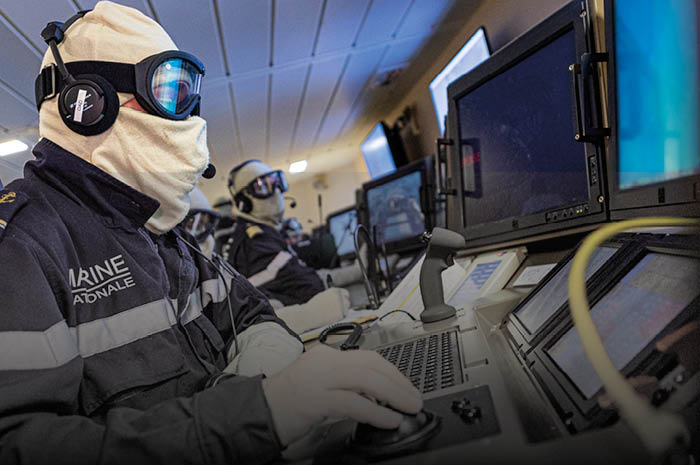The art of Electronic Warfare – From detection to deception, all the way to protection
The atmosphere in the Combat Information Centre (CIC) is tense: multiple tracks are appearing on screens across the different consoles; led lights are flashing across the dark room; and the quiet murmur that normally fills the space is turning into tense exchanges as operators share an alarming tactical situation. As the ship entered a contested area, the Commander knew this could happen: the ship is under attack, her systems possibly being jammed and/or deceived, and missiles seemingly headed her way. There is very little time to react to ensure ship and crew survivability… How can Electronic Warfare (EW) capabilities contribute to an adequate, rapid and comprehensive protection solution?
The art of detection and protection
In an increasingly volatile world, where peer and near-peer competition are back on the radar, EW plays a critical role. The virtual realm of the electromagnetic spectrum is where most of the battles are now fought, where operators must be able to detect the threats to their ship – and mission – survivability, and where Commanders can choose from multiple soft kill options that complement hard kill to increase their operational resilience and superiority.
A long-time provider of EW solutions to multiple navies across the world, Thales is well-versed in the importance of being able to count on a balanced, tactical approach at a moment’s notice.
“Thales offers its customers a full EW self-protection bubble, from detection all the way to protection” says Patrick Agnieray, Electronic Warfare Product Line Director for Thales.
And because today’s threats can come in multiple forms, from jamming to radar- and infrared-guided missiles, hard kill counter-measures – such as missiles – are not always the only or most appropriate initial response. “As such, whatever the threats, Thales’ EW solutions allow Commanders to choose from a range of countermeasures, from jamming and decoying to missiles, for a graduated response to the tactical context,” Agnieray adds.

The art of deception
Peer and near-peer competition does not only unfold in the battle space. A significant part of the art of war lies in the ability to deceive the adversary. In this context, EW is particularly relevant as it allows Commanders to leverage a full range of capabilities to distract, deceive and disorient one’s adversary.
So once the engagement is over and danger has been averted, or before that, Thales offers customers the opportunity to leverage EW solutions to deceive the adversary while seeking to gain operative and tactical awareness superiority.
“Deception is about confusing the adversary, disturbing their chain of command in order to buy your crew the time it needs to regain superiority” says Agnieray.
The art of innovation
Innovating in the battle space is as much about tactics as it is about integrating the innovative technologies that will facilitate such tactics. That is why Thales continuously works with its clients to understand their challenges and integrate software defined (including Artificial Intelligence - AI) and digitally enabled innovative solutions into the EW battle space of tomorrow.
“The partnership we have, and continue to develop, with our customers worldwide is critical to our ability to offer them a full set of EW solutions, enabling agility and adaptability in any circumstance” Agnieray concludes.

